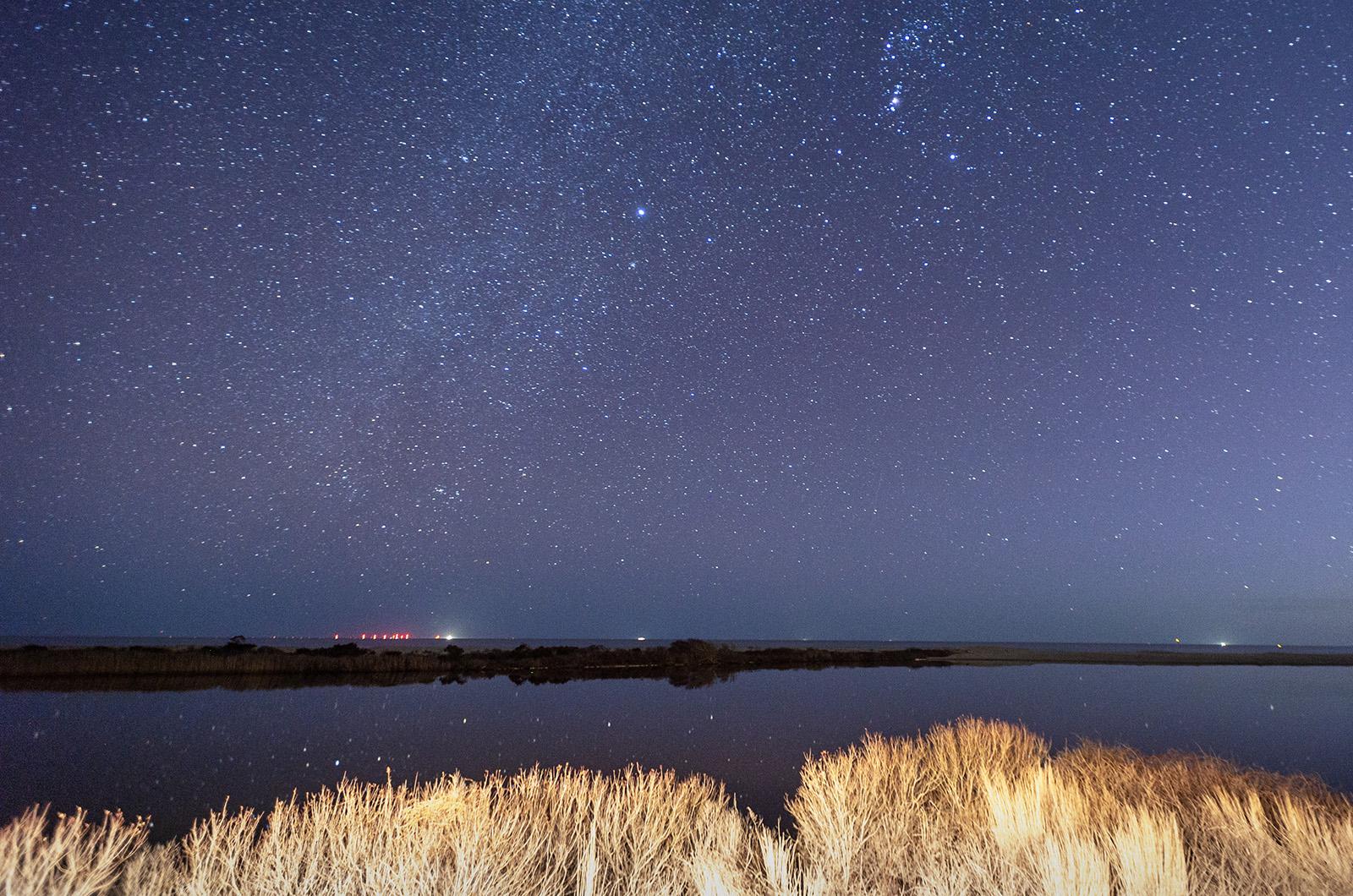The constantly blinking lights atop the Vineyard Wind offshore wind energy turbines could soon be turned off for most of the night.
Vineyard Wind is set to test its aircraft detection lighting system this week on 12 turbines, Nantucket select board chair Brooke Mohr said in a meeting last week. The lights have remained blinking at night, becoming a hot topic on the sister island and a nuisance for Vineyarders who say the lights stand out against the dark sky.
The system is designed to have the lights off unless an aircraft is approaching. When a plane comes near, the lights on the turbine start to flash red. The system was approved for the project by the Bureau of Ocean Energy Management, but hasn’t been in use as the project is being built.
At the Nantucket select board meeting Wednesday, Ms. Mohr said she talked to Vineyard Wind CEO Klaus Moeller, and he said the first 12 turbines would go dark at night starting this week.
“What they’re doing is they’re sending a helicopter over next week to test that,” Ms. Mohr said. “They expect to roll out another tranche of them the following month.”
A spokesperson for Vineyard Wind did not immediately respond to a request for comment this week, but Ms. Mohr said that going forward, the light system is supposed to be functioning as the turbines are brought online.
“I was told that every new turbine will have the ADLS come on when it’s commissioned,” she said.
Islanders have been frustrated with the lights, which can be seen on the 800-foot turbines off in the distance at night.
“There is a veritable forest of bright flashing red lights plainly visible from anywhere on the Island with a view to the south,” Frederick Khedouri, a Chilmark resident, wrote in a letter to the editor in November.
When the system is working, the Bureau of Ocean Energy Management estimated that the total time the lights would be on would be less than four hours a year, or .1 per cent of the night time hours per year.
The light system testing comes as Vineyard Wind tries to get back to normal operations after a blade snapped off a turbine in July. The company is required by the Bureau of Safety and Environmental Enforcement to remove blades that were made at a manufacturing facility in Canada.
Ms. Mohr said that 22 sets of blades, a total of 66 individual blades, will need to be removed. There is no completion date for the blade removal, but the process seems to be speeding up.
“They’ve removed four complete sets to date, and they are expecting to have a new vessel that can transport five sets of blades at a time that will be dedicated to blade removal,” Ms. Mohr said.







Comments (7)
Comments
Comment policy »